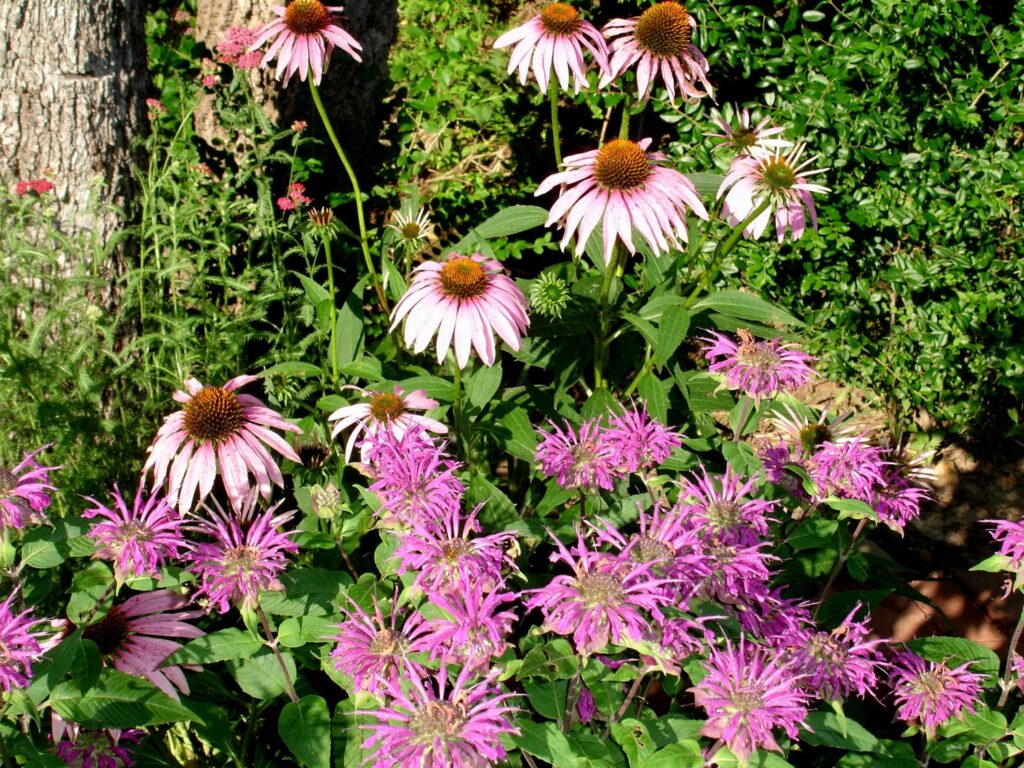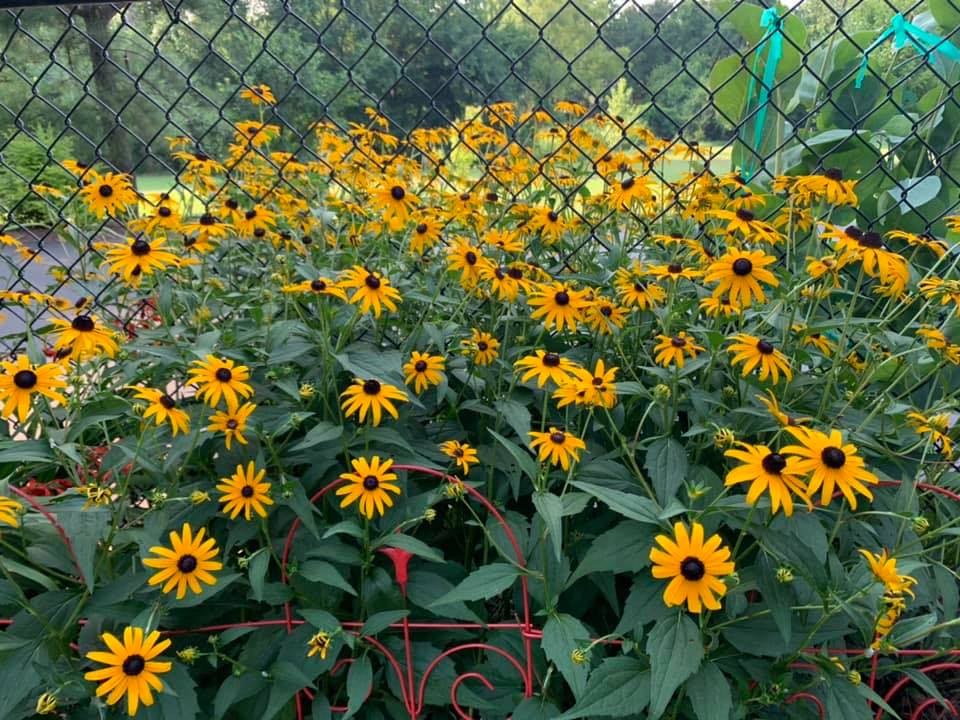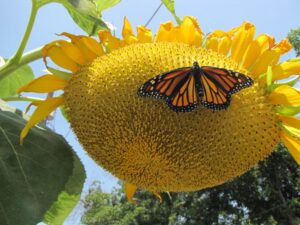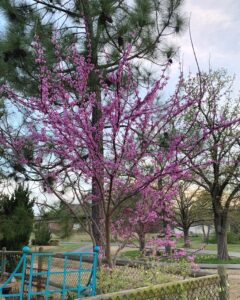Kathy Berryhill
Creek County Master Gardener
Fall is a great time to consider dividing spring-blooming perennial plants that have outgrown their space. Our plants have now recovered from the summer heat and drought and the cooler temperatures will help them when transplanted. As a plant becomes too crowded, it will have smaller leaves, less blooms and may become weak in the center. On average, dividing plants every 4-5 years will keep the plant healthier and reward you with more blooms. Gardens can be inexpensively expanded by dividing plants, or we can bless our friends with a start of some of our favorites!
Plants that can be divided now include, ornamental grasses (fountain, feather reed, blue fescue, etc.), tall sedum, phlox, monarda (bee balm), hostas, iris, daylilies, coral bells, mums, yarrow, coreopsis, black-eyed Susan and many others. (Exclude some of the long-lived species that have a reputation to not disturb. Examples include false indigo, balloon flower, bleeding heart, hardy hibiscus and perennial geranium.)
Knowledge of root systems is helpful to know how to dig up a plant. Many plants such as bee balm and ajuga, have surface roots. Some plants have long taproots like the poppy mallow. Plants with roots that run below the surface include ferns and Japanese anemone. Daylily, daisy and hostas have offset or expanding crown roots. Woody rooted plants include lavender, creeping phlox and sages. If uncertain which type of root a plant has, a little research into the specific plant will help you dig without damaging the roots.

Water plants prior to digging to make the job easier on you and the plant. Apply enough water to reach and moisten the roots. Inspect the plant for disease at this point, and again after dividing. Always discard distorted, diseased or rotted sections of a plant. Now gather the needed tools. Tools include a sharp spade, a trowel, a tarp, a hose (preferably with a nozzle) and gloves. Dig up the plant and lift the clump. The loose soil around the plant can be shaken off before placing the clump on the tarp. A soft shower of spray can also be used to rinse off dirt so the roots can be seen easily. Now, using a sharp spade, slice through the clump to divide it. For plants with bigger roots, a tree saw may be used. Pull the plant apart.

Replant each divided clump to a prepared hole that is wide enough to spread the roots naturally. Plants should be placed at the same depth as they were when previously growing. Some gardeners even prefer to replant a clump so the plant is facing the same direction as before. Lightly firm the soil around the transplant and keep watered well as the roots reacclimate to their new surroundings. Add a layer of mulch to help retain moisture. If a divided plant cannot be planted immediately, take care to keep the clump in a cool place that is out of the sun. Protect the roots by placing the clump in a garbage bag or in a pot with dirt. Before replanting, soak the root system in water.
Plants may show signs of transplant shock – wilt, faded blooms, etc. – but should recover and show new growth the following spring. With a little work now, you can show off double the blooms next year!
Happy Gardening!










